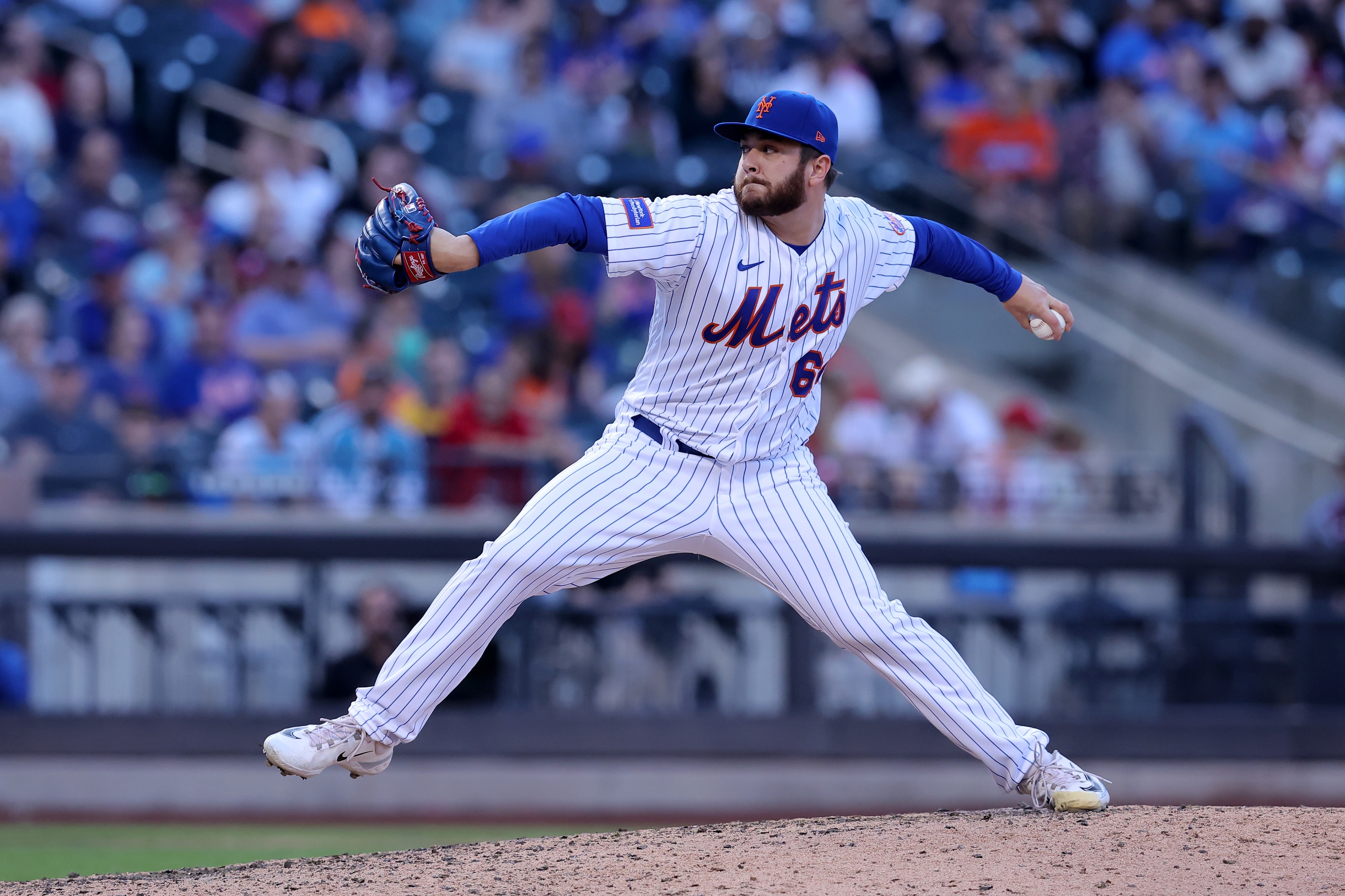Asked for a sleeper relief prospect at the start of the season, White Sox pitching coordinator Matt Zaleski identified undrafted right-hander Tyler Davis.
The 6-foot-3-inch Texan hung tough in his 2024 pro debut while bouncing across four different minor league levels. But more to the point, the Sox had nabbed Davis out of independent ball that April on the strength of a mid-90s four-seamer with 19 inches of inverted vertical break, and were seeing the seeds of a pitcher learning to hammer the top of the strike zone for the first time.
And while certainly when Davis opened up the '24 season with the Pioneer League Oakland Ballers, he was hoping to draw some MLB interest. He just saw it going a little bit differently.
"I thought that I was going to hit my way out of there," Davis said in a phone interview from his assignment at the Arizona Fall League. "I had a really good last year of college in terms of hitting, so I thought that's the route I was going to go."
Davis isn't overselling his final season at Sam Houston State. He transferred out of Wichita State after his freshman year, and had an extra year of eligibility due to the COVID-19 pandemic, so he was a 24-year-old first baseman in a smaller conference who didn't draw much draft buzz. But forced to focus on hitting after undergoing Tommy John surgery the year before, and having already sparked the curiosity of the coaching staff in rare pitchers' batting practice sessions before, Davis slashed .423/.491/.621 in 2023 in 59 games against WAC pitching.
Off the strength of that, he initially signed with the Ballers as a two-way player, expecting the bat to drive the conversation. But after a few days of intersquads, Ballers pitching coach Jim Dedrick had news for Davis.
"He came up to me and tapped me on the shoulder, 'Hey buddy, your way out of here is to pitch. So let's put the bat down and focus on pitching,'" Davis recalled.
Davis threw seven innings of one-run ball scattered across the Ballers' season-opening road trip, and got a phone call from the White Sox before ever having the chance to pitch in Oakland. There were enough injuries one day in 2024 with Low-A Kannapolis that Davis was asked to take part in pregame BP just in case, and he offered his hitting services to Barons manager Guillermo Quiroz a few times this past season, but the 27-year-old has yet to take an at-bat since. Instead, he was on the mound securing the final out to clinch the Barons' second straight Southern League championship last month.
"I earned the trust of of Q and and [pitching coach] John Kovalik toward the back end of the season for them to put the ball in my hand in those situations, and I just tried to take advantage of all those opportunities," said Davis, whose last nine appearances of the regular season all came in the ninth inning. "Pitching for a championship, pitching for the Barons after that season that we had was a lot of fun. So to be able to be on the the mound for the last out, that meant a lot because I was there all year."
After being an emergency fill-in at Triple-A Charlotte last year, Davis spent the whole year in Double-A, posting a 3.17 ERA in 54 innings. While his run prevention results weren't as dominant as command artists like Shane Murphy and Jake Palisch in the Barons rotation, he went about it in a fashion that tends to be more projectable to future leverage work. Davis ran a 28.2 percent strikeout rate on the strength of bullying Southern League hitters with riding fastballs at the top of the zone, even while using the pitch almost two-thirds of the time.
It mutes some enthusiasm that Davis put this season together right before turning 27 this month, but his progress has largely followed the pattern of someone relatively new to a full-time focus to pitching enthusiastically implementing a series of prescribed changes. His mid-80s slider and changeup both ran a solid ~33 percent miss rate, with the former being an upgrade from a loopier curveball he touted last year, and the latter being the beneficiary of midseason grip change. When Davis lifts his front leg in his delivery, he curls his foot inward at first (Wikelman Gonzáelz-style), which is an extra little bit of counter-rotation that the White Sox had him add -- in his first bullpen with the organization -- in order to stay closed longer in his delivery.
"It helps me keep that direction I want to lift and allows me to get into my back leg and get to the top," Davis said. "The days that I establish my fastball at the top and the command is consistent up there, my secondaries play consistently better, versus when I'm east and west or down. Because it starts off that same tunnel and the hitter can't protect them all, he's got to pick one. So if he's looking at the top and that's where his eyes are focused and the slider starts there, he can't also hit that one."
It hasn't been seamless, as Davis made progress in controlling walks in 2025 but his 11.9 percent rate is still too high. So far in the AFL, an assignment that makes more sense in accelerating his progression due to a late start in his career than needing more innings in this specific season, Davis had an appearance where he struck out the last five hitters of the game to lock up a Glendale victory, and also had a pair of blowup outings to spike his ERA to 13.50 in four appearances.
Pre-Tommy John, Davis threw out of a lower arm slot and leaned on a sinker to work east-west across the width of the strike zone, and his more north-south attack plan and the shorter arm action that's developed out of his higher slot are both as new as being a full-time professional pitcher is for him. In that vein, Davis' AFL performance is in line with his 2025 as a whole: It's clearly a work-in-progress, but he's missing bats (nine strikeouts of 26 batters faced) in a fashion that merits monitoring.
Even after a fairly rapid ascent from independent ball to pitching against some of the top prospects in the sport, Davis would rather focus on the work that needs to progress than what potentially lies ahead.
"I try not to get into ahead of myself with that," Davis said. "I try and just be with my be where my feet are, and just trust the work and trust the process and that's going to take care of itself. So I try not to think about the majors. I mean, everybody wants to get there, right? I just try and take care of the business I have right in front of me."






